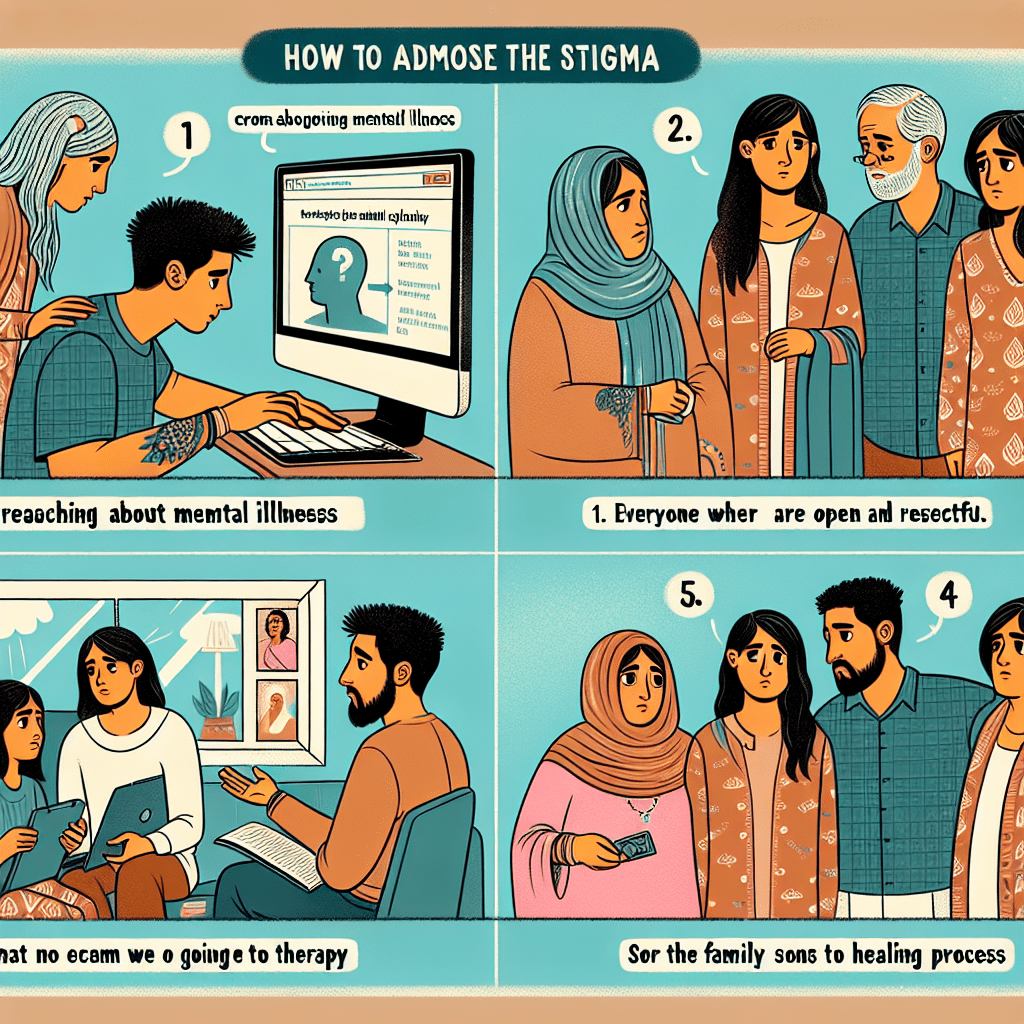

Mental illness stigma manifests through negative perceptions, discriminatory behaviors, and societal attitudes. It influences how individuals view mental health issues and those affected by them. Understanding these aspects is the first step to dismantling stigma. This understanding leads to empathy, compassion, and a collective motivation to create a supportive atmosphere within the family.
Stigma often stems from misunderstandings. Common misconceptions include beliefs that mental illnesses are a sign of weakness or that those affected can simply "snap out of it." Recognizing these stereotypes can help families to confront and dispel them.
Awareness of the emotional toll stigma takes is vital. Those dealing with mental health challenges often feel isolated, ashamed, and misunderstood. Fostering an understanding environment requires the family to acknowledge these feelings and actively combat stigma.
Addressing mental illness stigma is crucial for several reasons. First, stigma can hinder individuals from seeking help. Families that promote open discussion create an environment where seeking support feels safe rather than shameful. This proactive approach can lead to timely intervention and better mental health outcomes.
Second, reducing stigma enhances relationships. Open conversations foster trust and understanding within families. When members feel heard and accepted, they are more likely to share their thoughts and emotions, promoting healthier family dynamics.
Lastly, tackling stigma contributes to a broader cultural shift. Families that communicate openly about mental health can influence their communities. This ripple effect nurtures understanding beyond the household, encouraging others to confront stigma and embrace compassion.
Everyone can fall victim to mental illness stigma. It affects individuals struggling with mental health issues, their family members, and even society at large. Those diagnosed may internalize negative beliefs, leading to feelings of shame and isolation.
Family members often feel the impact, too. They might experience guilt or helplessness when unable to support their loved one effectively. Recognizing that stigma affects everyone in the family unit can help in devising strategies to combat it together.
Addressing stigma requires collective action. Everyone in the family has a role to play. This shared understanding fosters unity, paving the way for meaningful conversations and support systems.
Identifying signs of stigma within the family can help you understand its presence and impact. Here are some common indicators:
Being aware of these signs can guide your family’s approach towards more constructive dialogue.
Initiating conversations about mental illness begins with setting the right tone. Here are steps to guide this process:
Starting the dialogue sets the foundation for healing and progress.
Ongoing support is paramount in combating stigma. Here are practical strategies families can implement:
These strategies nurture a positive environment that stifles stigma.
Understanding the pros and cons provides clarity when addressing stigma. Consider the following:
Pros:
Cons:
While the journey may pose challenges, the benefits far outweigh the drawbacks.
Spreading awareness extends beyond family discussions. It involves communal efforts to bring attention to mental health issues. Here are ways to actively participate:
Your family can be a beacon of hope and understanding, impacting those around you.
Q1: What steps can I take if family members resist talking about mental health?
Start by creating a safe and non-confrontational environment. Gradually introduce the topic, focusing on empathy rather than judgment.
Q2: How can I educate myself and my family about mental illness?
Utilize books, articles, documentaries, and reputable online resources to provide accurate information and stimulate discussions.
Q3: What professional help should I consider for my family?
Consult mental health professionals like therapists, counselors, or support groups specializing in family dynamics and mental health.
Q4: How can I promote empathetic conversations about mental health at family gatherings?
Set an example by discussing your feelings and experiences. Encourage open expressions of thoughts and emotions.
Q5: What resources are available for families struggling with mental health issues?
Look for local or online support groups, educational programs, and counseling services tailored for families dealing with mental illness.
Disclaimer: As an Amazon Associate, I earn from qualifying purchases. I may earn a commission from qualifying purchases as an affiliate. Please note that I only recommend products I believe will provide value to my readers.